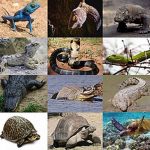Dr. N. Munal Meitei,
Environmentalist, email-nmunall@yahoo.in

World Photography Day takes place on August 19 as a worldwide celebration of the art, craft, science and history of photography. Since the early 19th century, photography has become an ever-increasing medium of personal expression and appreciation for countless people. The theme for this year is “An Entire Day”. With more than 8.23 billion people worldwide, the collective human experience over second of a single day amounts to cover 20 million years of the planet’s long history.
On this day, we pay tribute to the incredible art form, the photography. There are those personal photos that we all love and cherish, but there are also photos that speak thousands of words and tell a story to enable us to learn more about the Mother Nature.
Photography plays a pivotal role in raising public awareness about environment and wildlife issues. Through exhibitions, social media platforms and traditional media, photographers showcase the beauty of nature alongside its vulnerabilities. These visuals serve as a call to action, urging individuals and communities to become stewards for the environment and nature.
The world’s pristine forest are unprecedentedly loosing, oceans are over-fished terribly, the air continues to grow filthier each year and there is no signs of any slowing on human overpopulation. We may be winning in some battles, but we’re losing the actual war. The saddest part is that, we all are witnessing the pernicious for decades, but could not change to stop it.
Photography provides historical documentation of how the nature is transforming under the various environment impacts and creates a visual record for posterity. For instance, photos are a great way to showcase the year-by-year the changes in forest areas or retreat of a glacier or the rapid encroachment on protected areas. Professional wildlife images of endangered animals deliver a powerful message on the damage that changing landscapes can have on rare species in remote settings. Most importantly, this visual documentation also helps counter-claims by climate change deniers by providing indisputable visual evidence of the changes occurring in real location telling the picturesque changes.
Conservation and photography are two distinct fields, but their combined impact can be profound as a tapestry. Conservation photography combines nature photography with the proactive, issue-oriented approach of documentary photography as an agent to protect natural environment and improving the biosphere. Conservation Photography further adhere environmental, wildlife, habitat or cultural conservation by expanding public awareness on issues and stimulating remedies.
Climate change photography plays a key role in storytelling. Photographs put human narratives at the centre, capturing emotional moments of loss, fear, hope and resistance. Storytelling images builds public engagement, compassion and concern for people and animals at the front-lines of climate change. Images that reveal the costs of climate change can motivate audiences to take action.
Images offer compelling proof that climate change is a tangible reality unfolding before us. By visually portraying the challenges through storytelling, photography emerges as a vital instrument in combating the perilous effects of global warming. But it also has the power to shine a light on solutions.
Local photographers can have a tremendous impact in getting their viewers to think about what’s going on environmentally. Ever see a series of photos shot from the same spot showing a plain or a forested hillside being deforested to develop into a city. This will evoke the youth and people to act forward.
Our photos need to inform readers of what’s really going on the earth. Though not every picture may find an immediate use, a carefully catalogued archive of conservation pictures can help increase impact of conservation related news stories, public awareness campaigns, including internet activism and sometimes serve as Investigative journalism evidence in court proceedings. Images of habitat destruction, especially in protected areas, can be important as legal evidence against the anti-forest activity.
Photography not only highlights environmental challenges but also celebrates and documents the conservation efforts. Collaborations between photographers, environmental organisations, scientists, NGOs and local communities can capture positive strides in preserving ecosystems and wildlife. These photo images serve as powerful testaments to collective action, inspiring engagement in environmental protection for the individuals, NGOs and governments. For a photographer, a patience to wait – sometimes days on end – for that perfect moment comes from somebody who has a real love for the nature has the greatest presentation to tell the story of our nature.













